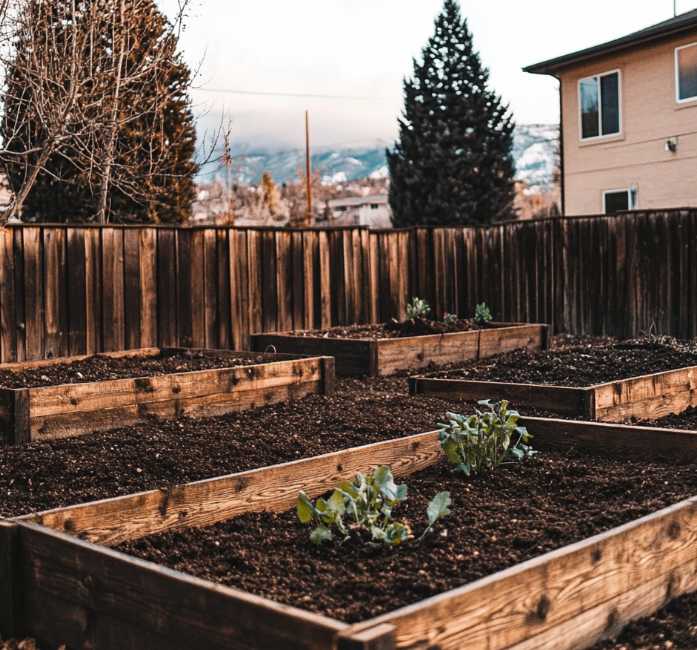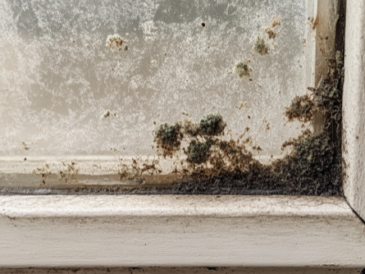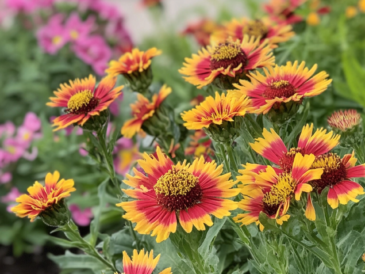As the colder months creep in, many gardeners let their raised beds go dormant, missing out on exciting opportunities. But your garden doesn’t have to hibernate! From growing fresh produce to enriching your soil and supporting wildlife, there’s a world of potential for your raised bed—even in winter. Let’s dive into the top ways to keep your raised bed active and productive all season long!
🌟 Part One: Maximizing Productivity and Sustainability in Winter
1. Plant Cold-Hardy Vegetables for a Winter Feast 🥬❄️
Winter gardening? Absolutely! Certain vegetables like kale, spinach, carrots, and Brussels sprouts thrive in frosty conditions. In fact, many taste even better after a nip of frost.
- Quick Tips:
- Add a layer of mulch to retain warmth.
- Use frost blankets for extra protection during extreme cold snaps.
With these veggies in your raised bed, you’ll have fresh, homegrown produce right when you need it most!
2. Extend Your Growing Season with Simple Techniques 🌡️🌱
Don’t let frost limit your gardening. Season extension methods like:
- Row covers
- Hoop houses
- Cloches
…can shield your plants from harsh weather. These tools not only protect your crops but also allow you to grow a greater variety of vegetables well into the colder months.
3. Turn Your Bed into a Winter Composting Powerhouse ♻️🍂
Why let your scraps go to waste? Use your raised bed as a composting site during the off-season.
- Layer in kitchen waste, garden trimmings, and leaves.
- Watch as the cold weather aids slow decomposition, enriching your soil with essential nutrients for spring.
This method reduces waste and ensures your bed is ready for planting come springtime.
4. Create a Winter Wildlife Haven 🐦🦊
Gardeners can make a big difference for local wildlife during the colder months:
- Add bird feeders and water sources.
- Plant shrubs or leave a corner of your bed untouched.
Supporting biodiversity has its perks: birds and insects that winter in your garden often help pollinate crops and control pests when spring arrives.
5. Nourish Your Soil with Cover Crops 🌾🌱
Protect your soil and boost its fertility by planting cover crops like:
- Clover
- Rye
- Winter peas
These plants suppress weeds, prevent erosion, and add organic matter back into the soil. Turn them under in spring for a nutrient-packed garden bed!
6. Incorporate Edible Perennials for Year-Round Growth 🌿🌍
Perennial plants such as asparagus, rhubarb, and chives thrive in cold weather and continue producing with minimal care. Once established, they’ll keep your raised bed productive every year.
7. Start Your Seedlings Early Using Your Raised Bed Indoors 🌱🏠
Transform your raised bed into a seed-starting station!
- Set up a cold frame or mini greenhouse over your bed.
- Use grow lights for extra warmth and light.
By the time spring arrives, you’ll have healthy, robust plants ready to hit the soil running.
🌟 Part Two: Creative Uses for Winter Gardening
8. Turn Your Raised Bed into a Worm Farm 🪱🌾
Take your garden to the next level with vermiculture (worm farming). By adding composting worms, like red wigglers, directly to your raised bed:
- Organic matter (kitchen scraps, leaves) transforms into nutrient-rich worm castings.
- Worm castings improve soil structure, boost fertility, and promote healthy plant growth.
It’s eco-friendly, reduces kitchen waste, and prepares your soil for spring planting success!
9. Install a Cold Frame: Your Winter Gardening Secret Weapon 🌞🌱
A cold frame is a game-changer for winter gardening. Acting like a mini-greenhouse, it traps solar heat and protects plants from frost.
- What You Can Grow: Hardy greens like lettuce, spinach, and radishes thrive under a cold frame.
- DIY Tip: Use reclaimed windows or clear plastic sheets for an affordable solution.
Cold frames are easy to construct, highly effective, and ensure fresh produce even during snowfalls!
10. Plan and Prepare for a Spectacular Spring 🌼🗓️
Winter is the perfect time to strategize for the next growing season.
- Reflect on your garden’s performance: What worked? What didn’t?
- Plan crop rotations to improve soil health and minimize pests.
- Clean and sharpen tools, organize seeds, and repair garden structures.
Pro Tip: Use this downtime to build trellises or design new layouts for your raised beds. When spring arrives, you’ll be ahead of the game and ready to plant like a pro!
🌟 Why Winter Gardening Matters 🌟
By keeping your raised bed active year-round, you:
- Maximize your garden’s productivity.
- Support soil health and local ecosystems.
- Stay connected to your gardening passion, even in colder weather.
So don’t let the frost hold you back—embrace these techniques to turn your raised bed into a thriving winter oasis!
Start today, and watch your winter garden transform into a season of endless possibilities!




